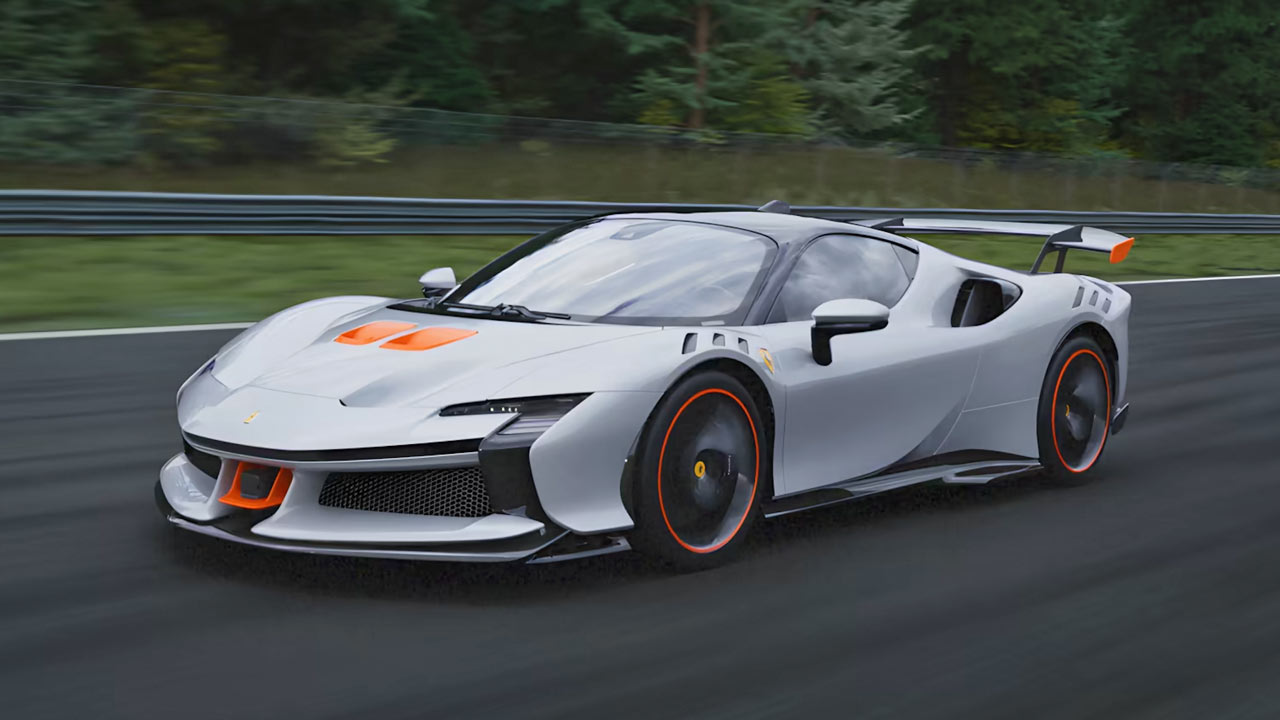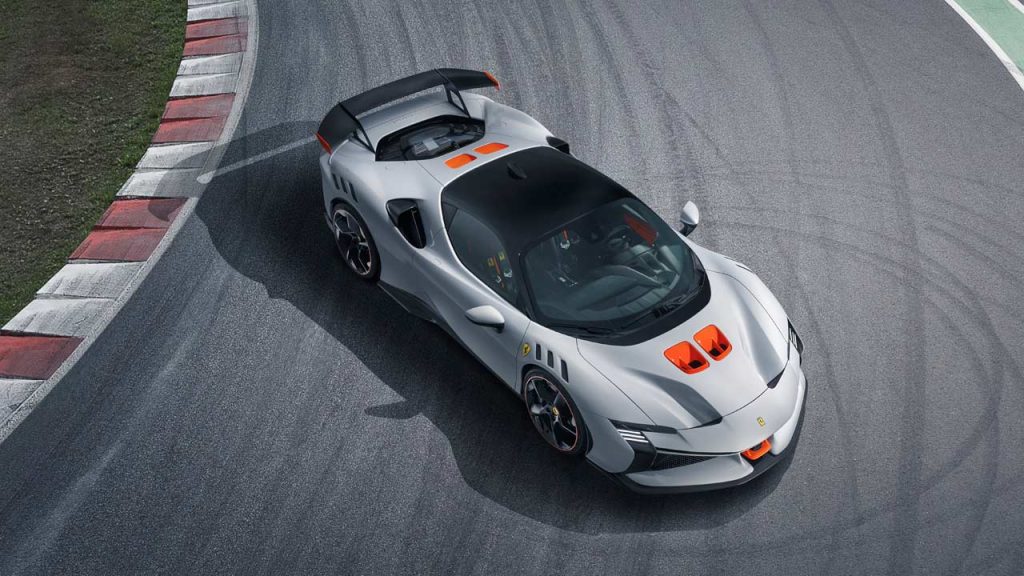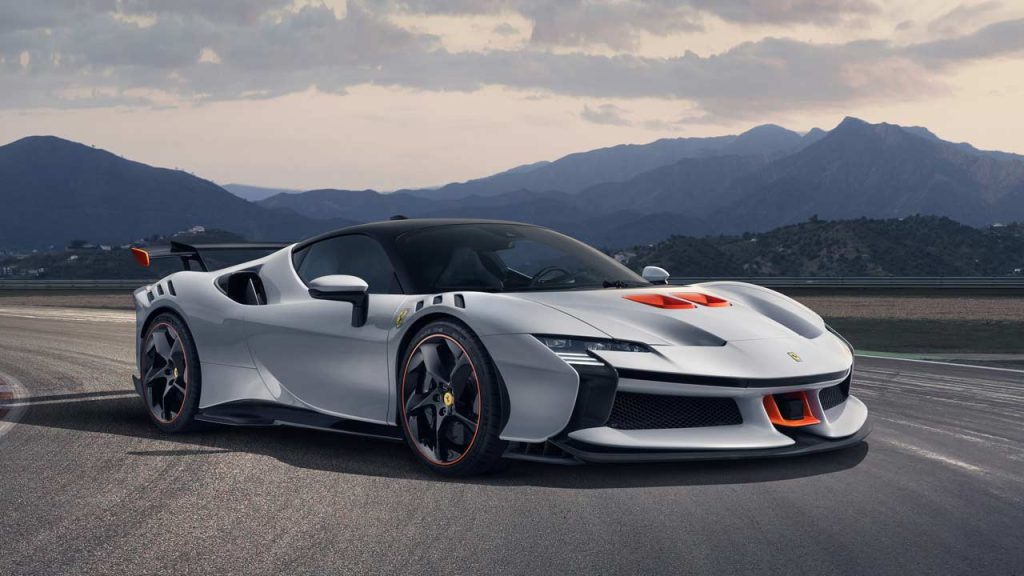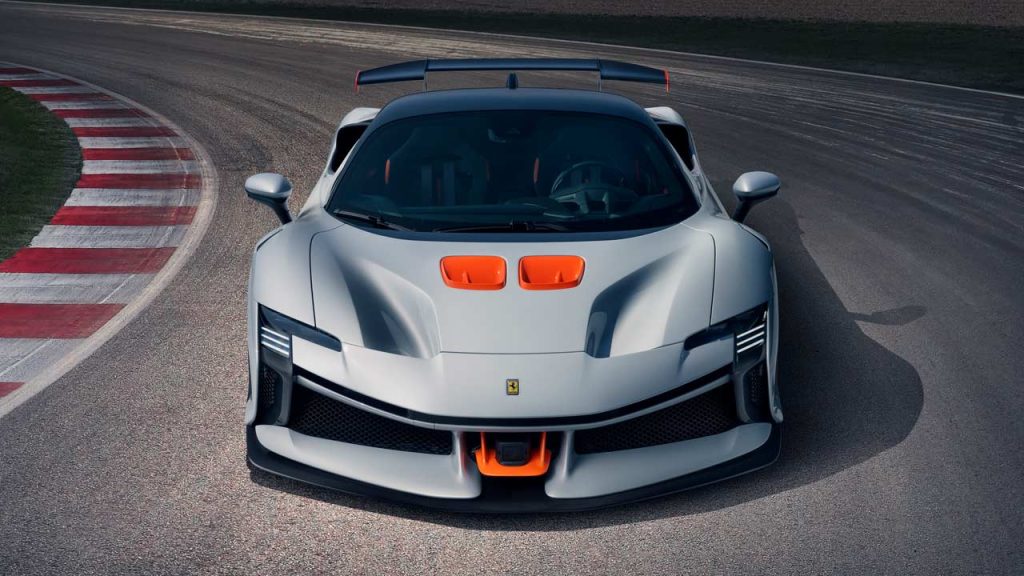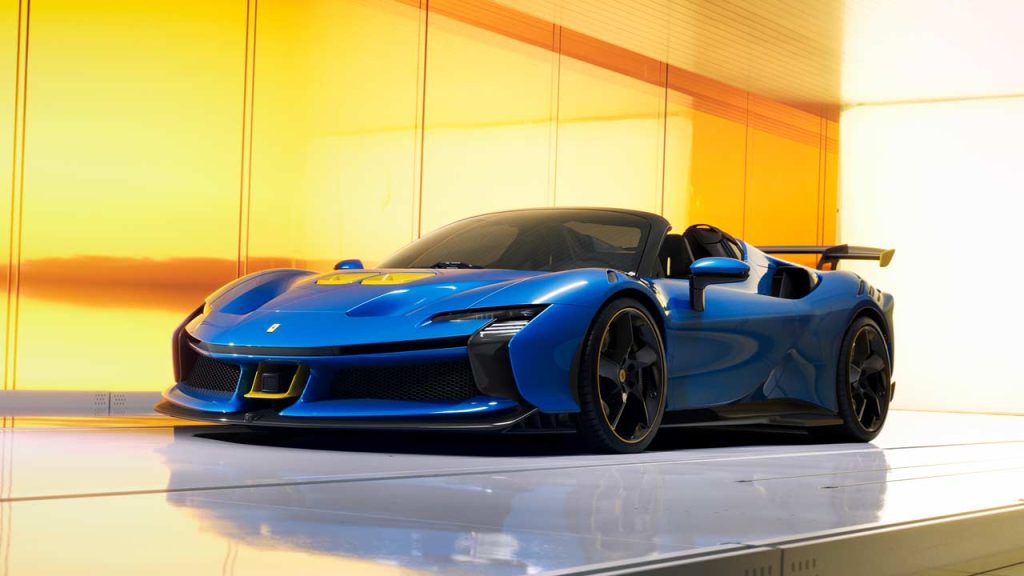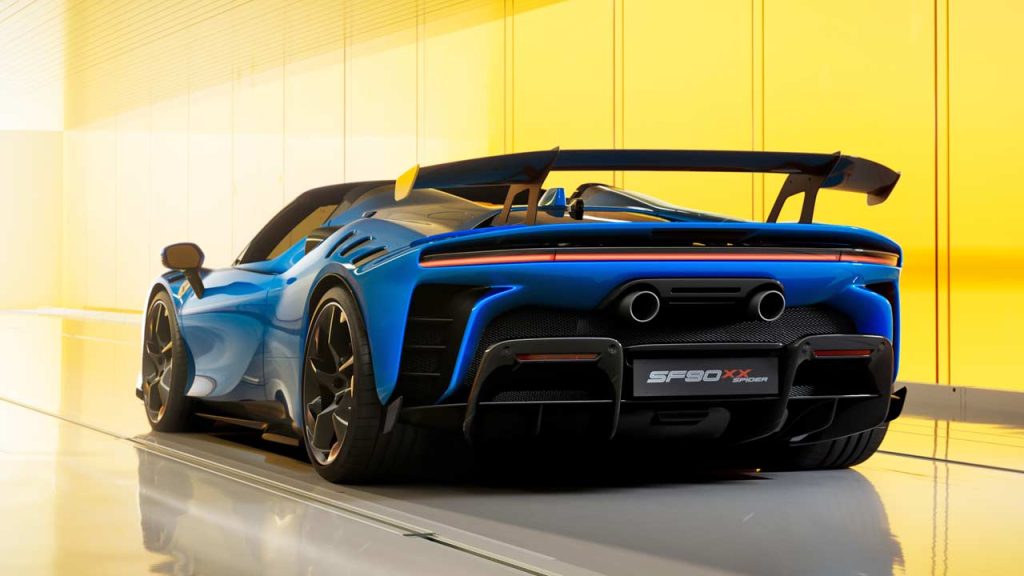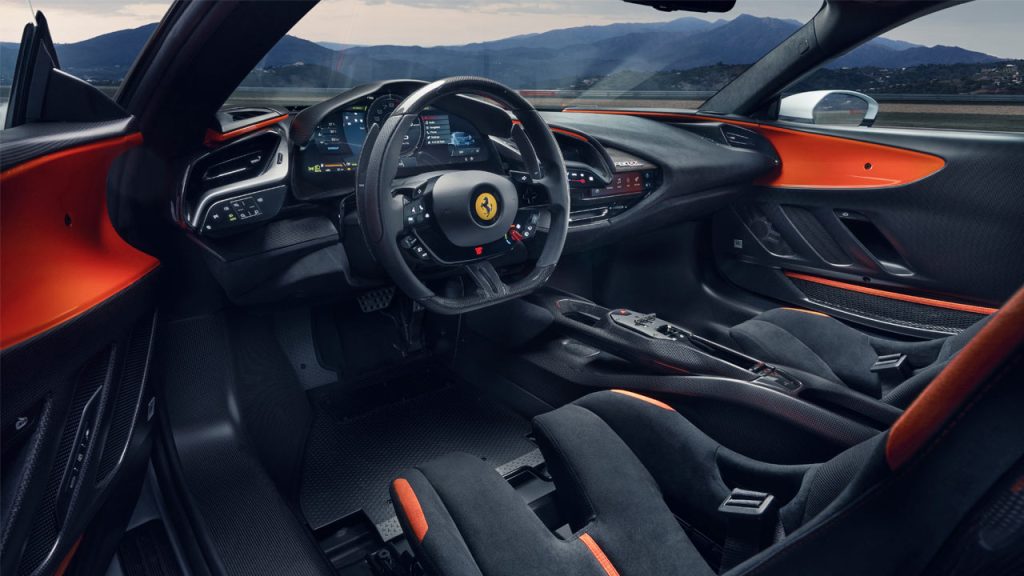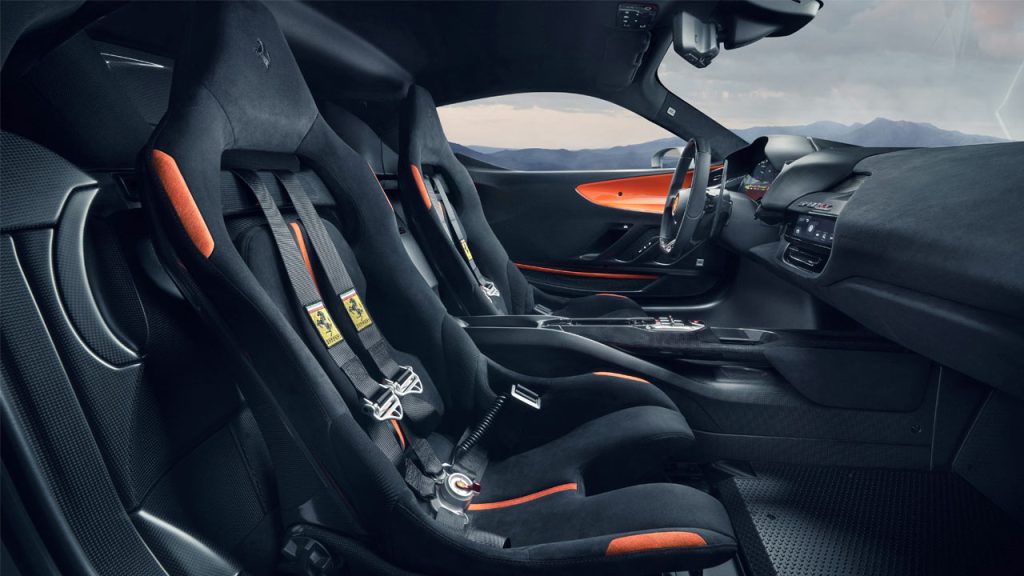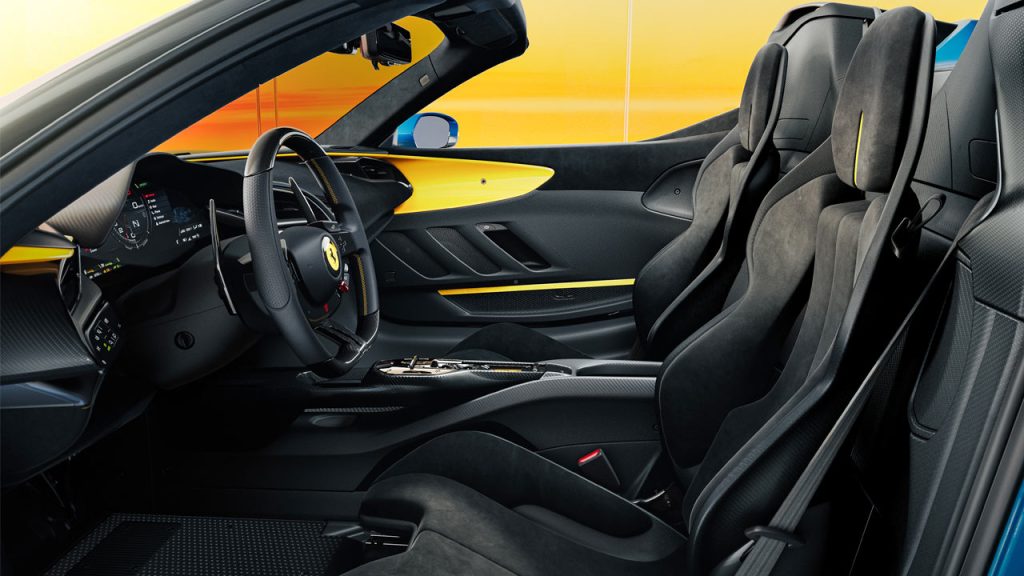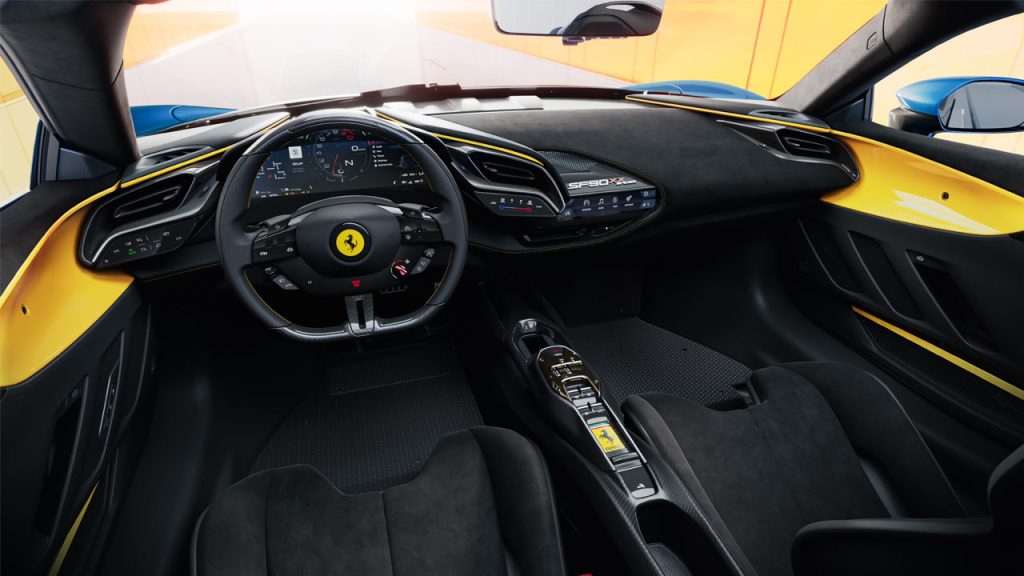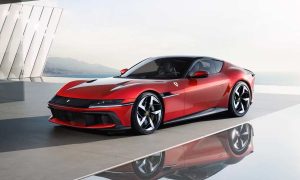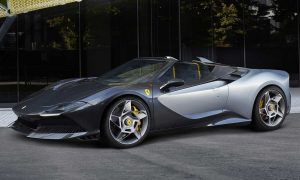Because these are the first road-legal XX cars.
As you might know, Ferrari’s XX Programme focuses on developing track-only versions of road-going cars. The last XX model was the FXX-K and the FXX-K EVO, which of course, were based on the LaFerrari. The EVO was nothing but an aerodynamic package available on the “regular” FXX-K. More than half a decade later, there’s a new XX model; there are two actually: the SF90 XX Stradale and the SF90 XX Spider, limited to 799 and 599 units, respectively. As mentioned, the main highlight of these two cars is that these are the first road-legal XX models.
The SF90 XX Stradale has some significant differences from its road-going counterpart, such as those larger bonnet vents (S-Ducts) with two extra vents in the middle; a larger front splitter; a wider front diffuser that is claimed to offer an increase in downforce of over 45 kg (99.2 lbs) at 250 km/h (155 mph) by working with vortex generators that themselves have been redesigned; a fixed rear wing; louvers on all wheel arches, and a redesigned rear diffuser. In fact, the rear-end looks like it is from a different car altogether. The lights and the bumper design are also different. The aforementioned S-Ducts alone are claimed to help increase front downforce by 20% compared with the SF90 Stradale. Thanks to those front ducts and louvers, Ferrari claims an overall front downforce of 325 kg (716.5 lbs) at top speed.
When the car is moving, cool air is drawn into the engine bay through three apertures: the first located above the intercooler intake on the side and the second crossways on the engine cover, while the third is a pair of ducts located to the sides of the struts of the fixed spoiler.
As for vehicle dynamics, you got the ABS EVO controller, a 6W-CDS sensor (can measure both acceleration and speed of rotation on all three axes), Ferrari Dynamic Enhancer 2.0, electronic Side Slip Control (eSSC) 1.0, and extra boost control logic to deliver additional power in short bursts. Ferrari claims that there’s a 9% improvement in lateral performance (Ay max) compared with the SF90 Stradale in high-speed handling conditions, mostly as a result of downforce. Furthermore, the roll rate was reduced by 10% ensuring better body control.
The car rides on 20-inch wheels wrapped with tyres measuring 255/35 at the front and 315/30 at the rear. Braking duties are handled by carbon ceramic rotors measuring 398 mm at the front and 390 mm at the rear, with a different pad design to maximize the contact surface.
On the inside, well, the SF90 XX models don’t look all that hardcore/stripped-down compared with their road-going siblings. The upper part of the dashboard is trimmed in Alcantara, while the lower part is trimmed in technical fabric. As part of weight-saving measures, the door panels, tunnel and mats, are now simpler in their shape. Carbon fibre was used only for functional areas. Those racing seats are comprised of a carbon fibre tubular structure with cushion supports. The backrest rake mechanism has been integrated into the seat using elastic trim materials—which hide the separation between the backrest and seat squab, which Ferrari says has contributed to saving 1.3 kg (2.9 lbs) per seat compared with the SF90 Stradale’s single-piece seat.
Powering the SF90 XX models is a hybrid powertrain that combines a 4.0L (3,990 cc) twin-turbo V8 engine, three electric motors and an 8-speed DCT. The ICE offers 586 kW (797 metric hp) at 7,900 rpm and 804 Nm (593 lb-ft) of torque at 6,250 rpm. The motors offer 171 kW or 232 metric hp, which means the combined power output is 1,029 metric hp. The battery pack is still 7.9 kWh, rated for a pure electric range of up to 25 km (16 mi).
Dry weight with optional content is claimed to be 1,660 kg (3,660 lbs), which interestingly, is 90 kg (198 lbs) more than the road-going model. But anyway, Ferrari claims a 0-100 km/h (62 mph) sprint time of 2.3 seconds, which is 0.2 seconds quicker than the road-going model. The official top speed is 320 km/h (199 mph), which is 20 km/h less than that of the road-going model.

Leave a Reply
Note: Comments that are unrelated to the post above get automatically filtered into the trash bin.
